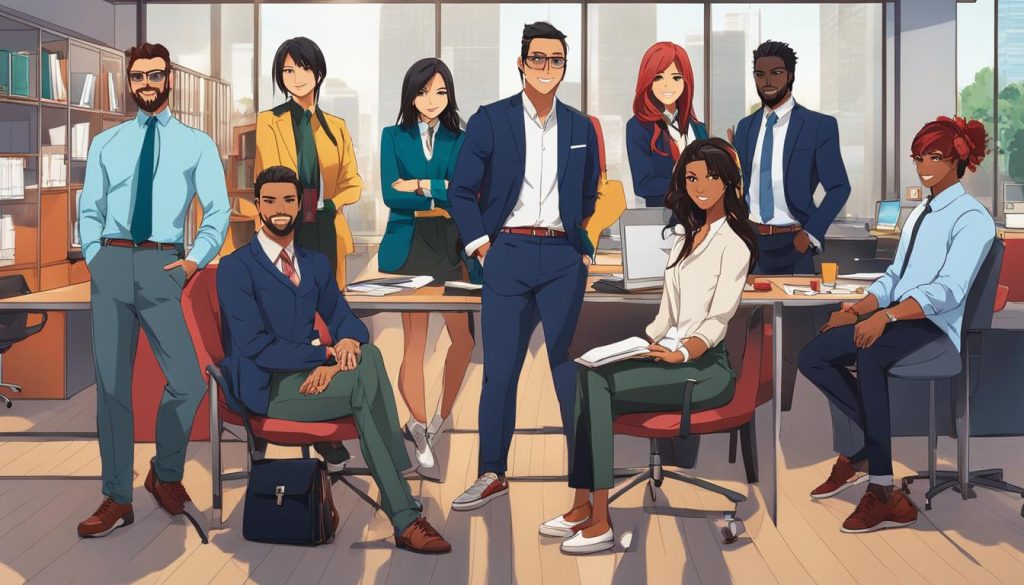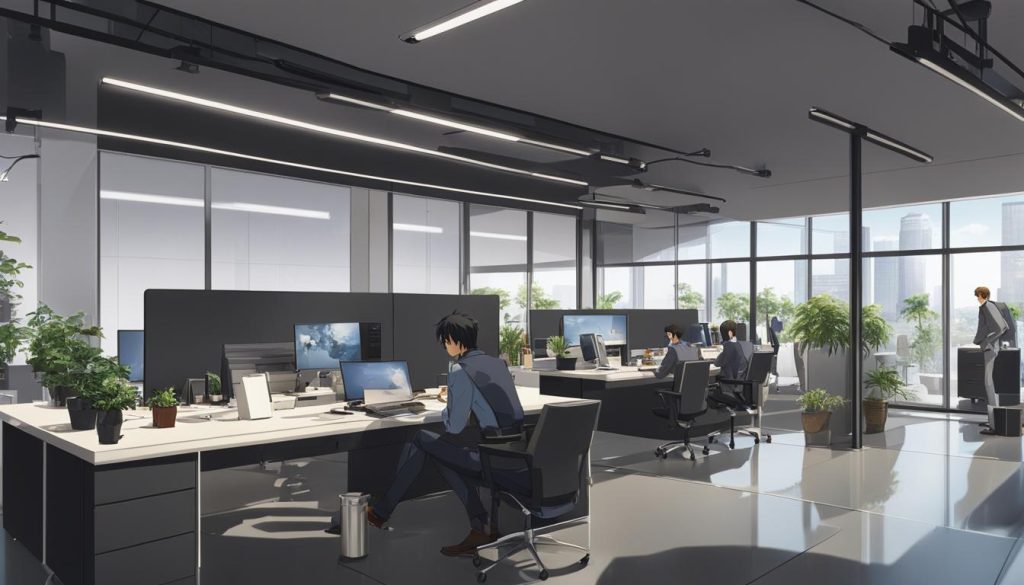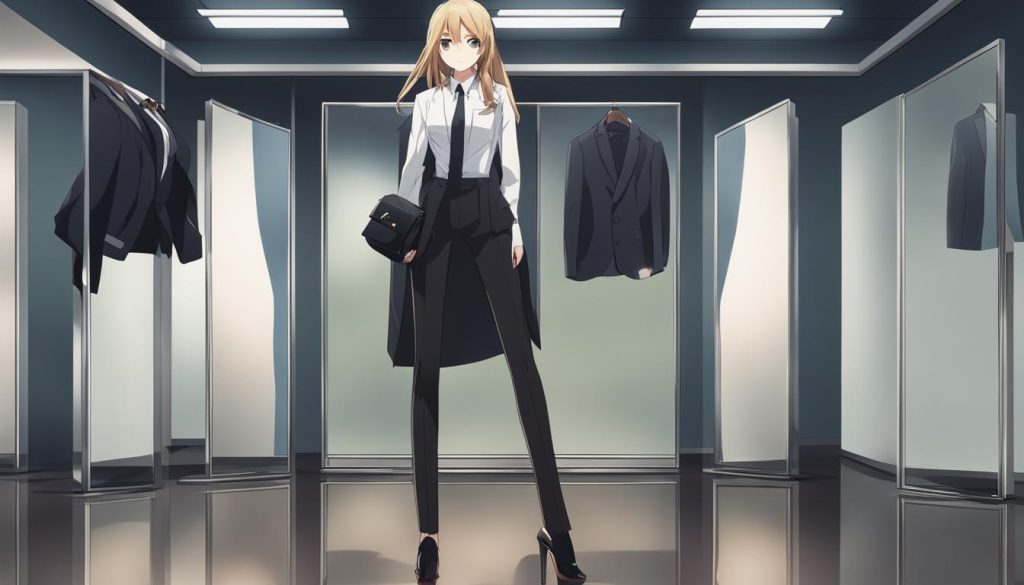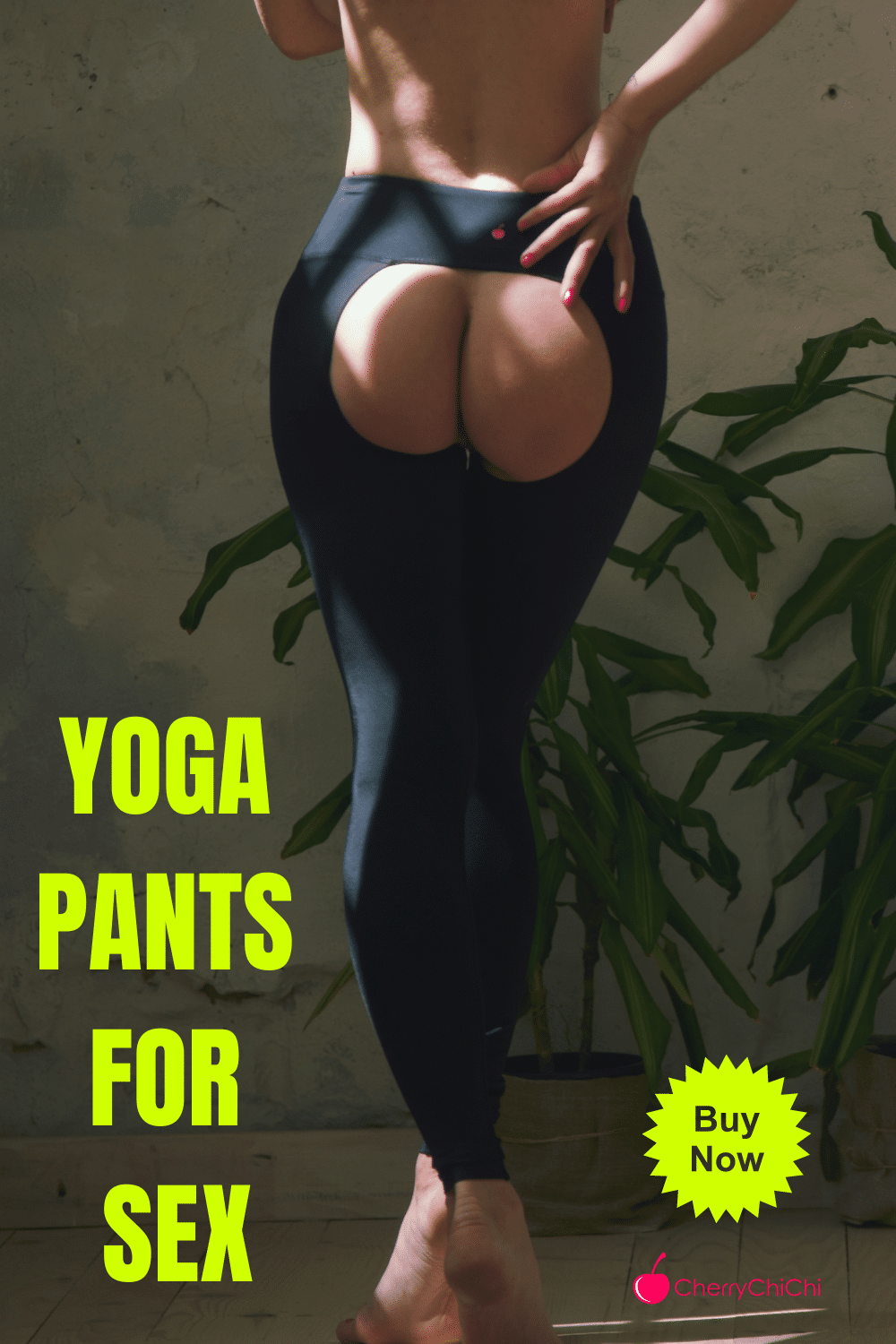
The question of whether leggings should be worn to work is a common dilemma in modern workplaces. The issue of workplace dress code and appropriate attire is a topic of concern for many employees. Millennials, who make up a large portion of the workforce, are challenging traditional dress norms and reshaping the meaning of “work clothes.” This article will explore the practicality and professionalism of wearing leggings to work and discuss the impact of changing societal norms on workplace fashion.
Key Takeaways:
- Workplace dress codes have evolved over time, influenced by societal changes and shifts in cultural norms.
- The perception of leggings as work attire varies among different workplaces and industries.
- Workplace dress codes have been influenced by cultural and gender biases throughout history.
- The comfort and functionality of work attire play a significant role in the ongoing debate about leggings in the workplace.
- The modern work environment, including the rise of remote work and relaxed dress codes, has led to a shift in expectations regarding work attire.
The Evolution of Workplace Dress Codes
The workplace dress codes have undergone significant changes over the years, adapting to societal and cultural shifts. In the past, professional attire was often limited to suits and conservative dresses. However, the introduction of “business casual” dress codes in the 1990s challenged these traditional expectations. Companies began to realize the importance of employee comfort and self-expression, leading to a more relaxed approach to workplace attire.
Today, many successful organizations embrace a business casual or even casual dress code, allowing employees to wear jeans, t-shirts, and other more casual clothing items. The focus has shifted from strict adherence to formal attire to creating a comfortable and inclusive work environment. This evolution has sparked a debate about the definition of professional attire and whether leggings should be considered work-appropriate.
Table:
Traditional Dress Codes Modern Dress Codes Suits, conservative dresses Business casual, casual attire Less emphasis on comfort and self-expression Focus on employee comfort and inclusivity Strict adherence to formal attire More relaxed approach to workplace attire
With the changing workplace dynamics and cultural attitudes towards fashion, there is a growing acceptance of non-traditional work outfits. This includes the consideration of leggings as a potential work-appropriate clothing item. The shift in dress code standards reflects the desire for employees to feel comfortable and express their personal style while maintaining professionalism in the workplace. Whether leggings are appropriate for work largely depends on the specific dress code expectations of each organization and industry.
While some companies and industries may have strict guidelines that prohibit leggings, others may allow them as long as they are styled appropriately. This highlights the importance of understanding and adhering to dress code requirements while still allowing for individuality and self-expression in the workplace. Balancing comfort, functionality, and professionalism is crucial when considering whether leggings should be worn to work.
The Perception of Leggings in the Workplace
The perception of leggings as work attire varies among different workplaces and industries. While some companies have embraced leggings as an acceptable form of pants, others maintain strict dress code guidelines that prohibit their usage, considering them too casual or revealing for the professional environment. The ongoing debate over whether leggings can be considered pants and their impact on a professional image has sparked discussions about their suitability in the workplace.
Companies with more relaxed dress codes or those in creative industries may be more open to allowing leggings in the workplace, given their comfort and flexibility. However, organizations that prioritize a more formal and traditional professional image may view leggings as inappropriate. The perception of leggings in the workplace is influenced by factors such as company culture, industry norms, and the specific expectations outlined in dress code policies.
Leggings can be styled in a way that creates a professional look by pairing them with longer tops, dresses, or skirts. This helps to create a more modest and work-appropriate outfit. It is important to note that even when leggings are allowed, they should be worn in conjunction with appropriate tops or outerwear to maintain a professional appearance. The key is to strike a balance between comfort and maintaining a polished image in line with workplace attire standards.
In conclusion, the perception of leggings in the workplace is subjective and dependent on the specific workplace and industry. While some companies may consider leggings as pants and allow their usage, others may view them as inappropriate for a professional image. It is essential for employees to be aware of the dress code guidelines of their workplace and consider the expectations and culture when deciding whether leggings are suitable for work attire.
The Influence of Cultural and Gender Bias
Cultural and gender biases have long influenced professional dress standards and workplace attire expectations. Historically, standards of professional dress have been defined by those in power, often reflecting societal norms and expectations. This has resulted in disparities in dress requirements for different genders and cultural groups, perpetuating discriminatory practices.
For example, certain workplaces have enforced dress codes that explicitly prohibit hairstyles traditionally worn by black individuals, such as natural hair or braids. These biased standards not only restrict personal expression but also reinforce harmful stereotypes and create an unwelcoming environment for marginalized employees.
Challenging and dismantling these biases is crucial for creating inclusive work environments. Employers and organizations should actively review and revise dress codes to ensure they are fair, equitable, and free from cultural and gender biases. By embracing diversity and promoting self-expression through clothing choices, workplaces can foster a more inclusive and accepting atmosphere for all employees.
“I believe that it is important for workplaces to recognize and address the influence of cultural and gender biases in professional dress standards. By promoting inclusivity and diversity, organizations can create a more welcoming environment for all employees.”
The Impact of Comfort and Functionality
When it comes to choosing work attire, comfort and functionality are important factors to consider. In the ongoing debate of leggings versus traditional pants, the comfort and flexibility of leggings often make them an appealing choice in the workplace. Leggings provide ease of movement and a comfortable fit that can contribute to a more relaxed and productive work environment.
However, traditional pants are often perceived as more structured and professional in appearance. The tailored design and fabric of traditional pants can give a polished and put-together look, which may be preferred in certain industries or work settings where a more formal dress code is enforced. As with any clothing item, it’s essential to strike a balance between comfort and maintaining a professional appearance that aligns with your workplace’s expectations.
Table: Leggings vs. Traditional Pants
| Leggings | Traditional Pants | |
|---|---|---|
| Comfort | High | Varies depending on fit and fabric |
| Flexibility | High | Varies depending on fit and style |
| Professional Appearance | Varies depending on workplace and industry | Generally perceived as more professional |
As seen in the table above, leggings offer high comfort and flexibility, while the perception of their professional appearance may vary depending on the workplace and industry. Traditional pants, on the other hand, can cater to a more formal dress code but may sacrifice some comfort and flexibility depending on the fit and style.
In the end, the decision to wear leggings or traditional pants to work should be based on a careful consideration of your workplace’s dress code, industry standards, and personal preferences. It’s important to find a balance that allows you to feel comfortable and confident while maintaining a professional image that aligns with your workplace culture.
Dress Codes in the Modern Work Environment
The modern work environment has undergone significant changes in recent years, with the rise of remote work and the adoption of more casual dress codes. As companies strive to create a flexible and inclusive work culture, traditional notions of professional attire have been challenged. The concept of “relaxed work attire” has gained popularity, allowing employees to express their individuality while maintaining a level of professionalism.
Remote work, in particular, has played a major role in shaping the modern work environment. With employees no longer confined to a physical office space, the need for strict dress codes has diminished. Instead, companies are embracing a more casual approach, recognizing that employee productivity is not dependent on traditional corporate attire.
Furthermore, casual dress codes in the modern work environment have been found to have positive effects on employee morale and productivity. Research has shown that when employees are allowed to dress comfortably and express their personal style, it can enhance their sense of well-being and job satisfaction. This shift in dress codes also reflects a broader cultural shift towards valuing individuality and embracing diverse fashion choices.
“With the changing work landscape and cultural attitudes towards fashion, it is important for companies to adapt their dress codes to reflect the needs and preferences of their employees.”
While it is important for employers to establish guidelines that ensure professionalism and prevent any potential distractions, it is equally important to recognize the benefits of a more relaxed dress code. By allowing employees to dress in a way that suits their personal style and comfort, companies can foster a positive work environment and encourage creativity and self-expression.
The Impact of Remote Work
The rise of remote work has had a profound impact on dress codes in the modern work environment. With employees working from home or in non-traditional office settings, the need for formal business attire has diminished. Remote workers often have more flexibility in their clothing choices, opting for comfortable and casual attire that allows them to be productive in their remote workspaces.
| Advantages | Disadvantages | |
|---|---|---|
| Increased comfort | – Employees can dress in attire that suits their personal style and preferences. – Greater freedom of movement and comfort during the workday. |
– Potential decrease in professionalism if not appropriately managed. – May blur the boundaries between work and personal life. |
| Improved morale | – Employees feel more at ease and relaxed in their clothing choices, leading to increased job satisfaction. – Encourages a positive work-life balance. |
– Risk of employees dressing too casually or inappropriately for work. – Potential difficulty in enforcing dress code standards across remote teams. |
| Promotes individuality | – Allows employees to express their personal style and fashion preferences. – Fosters a sense of individuality and diversity in the workplace. |
– Potential for inconsistent or unprofessional appearances if not properly managed. – Difficulty in setting clear guidelines for appropriate attire. |
Styling Leggings for a Professional Look
When it comes to wearing leggings in the workplace, it’s important to style them in a way that creates a professional and polished look. By pairing leggings with appropriate tops and accessorizing thoughtfully, you can elevate your outfit to meet the standards of a professional work environment.
One way to style leggings for a professional look is to pair them with longer tops, such as tunic-style blouses or flowy dresses. This helps to create a more modest and balanced silhouette. Opt for tops that are made of high-quality materials and have a tailored fit to maintain a polished appearance.
Accessorizing is another key aspect of styling leggings for work. Adding a belt to define your waist or wearing structured blazers or cardigans can help elevate the overall outfit and give it a more polished look. Consider incorporating statement accessories such as necklaces or earrings to add a touch of personality while still looking professional.
To complete your work-appropriate outfit, choose appropriate footwear. Depending on your workplace dress code, opt for closed-toe shoes or heels that complement your overall look. This will add a final touch of professionalism to your outfit and help you feel confident and put-together.
Table: Work-Appropriate Outfit Ideas with Leggings
| Outfit Idea | Description |
|---|---|
| Blazer and Tunic Top | Pair leggings with a tailored blazer and a longer tunic top for a professional and stylish look. |
| Structured Dress | Opt for a structured dress that falls below the hips and wear leggings underneath for added comfort and coverage. |
| Long Sweater and Belt | Layer a long sweater over leggings and cinch it at the waist with a belt for a chic and put-together outfit. |
| Button-Down Shirt and Cardigan | Pair leggings with a crisp button-down shirt and layer a cardigan or blazer over it for a sophisticated ensemble. |
By following these styling tips and incorporating some of the work-appropriate outfit ideas, you can confidently wear leggings in the workplace while still maintaining a professional and polished image. Remember to consider your workplace’s dress code and dress accordingly to ensure that your outfit is appropriate for your specific work environment.
Alternatives to Leggings in the Workplace
While leggings have gained popularity as a comfortable and versatile clothing option, they may not always be suitable for the workplace. If your office dress code prohibits leggings or you simply prefer a more traditional look, there are plenty of alternatives to consider. Whether you’re looking for work-appropriate pants or skirts, there are various options available that can help you maintain a professional appearance while adhering to the dress code.
For those who prefer pants, tailored trousers or slacks are excellent alternatives to leggings. These pants offer a more formal and structured look, making them suitable for a professional work environment. Opt for neutral colors like black, navy, or gray, and pair them with blouses or button-down shirts for a polished appearance.
If you prefer skirts, there are plenty of styles that can be worn to work. Pencil skirts are a classic choice, providing a sleek and sophisticated look. Midi skirts, which fall below the knee, offer a more modest option while still being fashionable. Pair them with a blouse or a tailored blazer for a chic ensemble.
Table: Comparison of Work-Appropriate Pants and Skirts
| Pants | Skirts | |
|---|---|---|
| Style | Tailored trousers or slacks | Pencil skirts or midi skirts |
| Formality | More formal and structured | Can be formal or more relaxed, depending on the style |
| Versatility | Can be paired with various tops and blouses | Can be paired with blouses, button-down shirts, or sweaters |
| Length | N/A | Pencil skirts are typically knee-length, while midi skirts fall below the knee |
When choosing alternatives to leggings, it’s important to consider the dress code guidelines and the professional image you want to portray. Remember to select clothing that fits well and flatters your body shape, as this can contribute to a polished and put-together appearance. Accessorize with appropriate footwear and add a few key accessories to complete your work-appropriate look.
By exploring the alternatives to leggings and embracing other work-appropriate clothing options, you can create a professional look that aligns with your company’s dress code while still expressing your personal style and individuality.
The Importance of Individuality and Personal Expression
In today’s modern workplaces, the importance of individuality and personal expression cannot be understated. While there are often dress code expectations in the professional environment, allowing employees to embrace their personal style and unique fashion choices can contribute to a positive work environment and boost employee morale. Embracing personal style not only promotes self-expression but also fosters a sense of authenticity and confidence in the workplace.
Allowing employees to express their individuality through their clothing choices can also create a more inclusive and diverse work culture. It acknowledges that everyone has different tastes, preferences, and cultural backgrounds, and they should be celebrated rather than suppressed. When employees feel free to express themselves through their clothing, it can lead to increased creativity, productivity, and overall job satisfaction.
Embracing unique fashion choices in the workplace can also be a way to break free from traditional gender norms and biases. It allows individuals to challenge societal expectations and redefine traditional notions of professional attire. By encouraging individuality and self-expression, workplaces can create an environment where everyone feels valued and accepted for who they are.
Benefits of Embracing Personal Style and Individuality
There are several benefits to embracing personal style and individuality in the workplace:
- Boosts employee confidence and self-esteem
- Promotes creativity and innovation
- Fosters a sense of inclusivity and diversity
- Enhances employee morale and job satisfaction
- Encourages self-expression and authenticity
“Personal style and self-expression are vital aspects of our identity. By embracing individuality in the workplace, we create a space where everyone can feel comfortable and confident in their own skin.” – Anonymous
By recognizing and supporting personal style and self-expression, workplaces can create a more vibrant, diverse, and inclusive atmosphere. It’s important for employers to strike a balance between enforcing a professional dress code and allowing employees to express their individuality through their clothing choices. When employees feel free to be themselves, it can lead to increased job satisfaction, engagement, and overall success in the workplace.
The Role of Fashion in Work Culture
Fashion trends and styles play a significant role in work culture, influencing the way employees present themselves and impacting the overall atmosphere in the workplace. Today, many offices are embracing a more fashion-forward approach, recognizing that personal style and self-expression can contribute to a positive work environment. Fashion-forward offices allow employees to experiment with their clothing choices, leading to increased self-confidence and a sense of identity in the workplace.
When employees feel empowered to express themselves through their clothing, it can have a positive impact on their overall job satisfaction and productivity. Research has shown that when individuals are allowed to dress in a way that aligns with their personal style, they experience higher levels of self-confidence and motivation. This, in turn, can lead to improved job performance and a more positive work culture.
However, it’s important to find a balance between embracing fashion trends and maintaining professionalism in the workplace. While some organizations encourage employees to take fashion risks, it’s essential to consider the industry, company culture, and client expectations. The goal should be to create a work environment where employees feel confident and comfortable while still adhering to appropriate dress codes and presenting a professional image.
The Impact of Fashion on Self-Confidence
One of the key benefits of embracing fashion in the workplace is its impact on self-confidence. When employees are able to showcase their personal style and wear clothing that makes them feel good, it can boost their self-esteem and overall sense of self-worth. This, in turn, can lead to increased productivity and a more positive work environment.
“Fashion is a form of self-expression, and when employees can express themselves through their clothing, it can have a profound impact on their confidence and how they show up in the workplace.”
By allowing employees to dress in a way that reflects their personality and individuality, employers signal that they value their employees’ unique qualities. This, in turn, can foster a sense of belonging and loyalty among the workforce, leading to increased job satisfaction and employee retention.
The Importance of Fashion-forward Offices
Fashion-forward offices play a vital role in creating an inclusive and engaging work environment. By encouraging employees to embrace fashion trends and express themselves through their clothing, these workplaces cultivate a culture of creativity and innovation. Employees feel empowered to bring their whole selves to work, resulting in higher levels of engagement and collaboration.
Furthermore, fashion-forward offices recognize that clothing choices can impact how individuals are perceived by colleagues and clients. By encouraging employees to dress in a way that reflects their personal style while still adhering to professional standards, these offices ensure that employees can maintain a positive and credible image.
| Benefits of Fashion-forward Offices | |
|---|---|
| 1 | Boosts employee self-confidence and morale |
| 2 | Fosters creativity and innovation |
| 3 | Enhances employee loyalty and retention |
Balancing Practicality and Professionalism
When it comes to choosing appropriate work attire, finding the middle ground between comfort and professionalism is essential. Each workplace has its own dress code expectations, and it’s important to consider these guidelines while also prioritizing personal comfort. By striking a balance between practicality and professionalism, employees can make informed decisions about whether leggings should be worn to work.
While leggings are known for their comfort and flexibility, they may not always align with the image of traditional professional attire. To determine if leggings are suitable for the workplace, consider the specific dress code policies and the overall impression you want to convey. If your workplace allows leggings, you can style them in a way that maintains professionalism. Pairing leggings with longer tops, dresses, or skirts can create a more modest and work-appropriate look. Accessorizing and selecting appropriate footwear can further enhance the overall appearance.
However, it’s important to note that not all workplaces permit leggings as part of their dress code. In such cases, it is crucial to explore alternatives that are considered more traditionally work-appropriate. Pants such as slacks or tailored trousers, as well as skirts of an appropriate length, are often favored in professional settings. By choosing alternatives that align with the dress code expectations, employees can maintain professionalism while still feeling comfortable in their attire.
Ultimately, the decision of whether leggings should be worn to work depends on the specific workplace and individual preferences. By considering the expectations of the dress code, comfort level, and personal style, employees can find a middle ground that allows them to balance practicality with professionalism. It’s important to remember that workplace attire should always reflect a certain level of respect for the work environment and the colleagues we interact with on a daily basis.
Key Considerations for Balancing Comfort and Professionalism
- Understand the dress code expectations and guidelines of your workplace.
- Consider the comfort level of your clothing and how it may affect your productivity and confidence.
- Ensure your attire reflects professionalism and respect for the work environment and colleagues.
- Explore alternatives to leggings if they are not permitted in your workplace.
- Experiment with styling options to make leggings more work-appropriate, such as pairing them with longer tops or skirts.
Conclusion
In conclusion, the question of whether leggings should be worn to work is complex and depends on various factors such as dress code expectations, comfort, professionalism, and individual style. The evolution of workplace dress codes and societal norms has challenged traditional notions of professional attire.
Ultimately, the decision to wear leggings to work should be based on a consideration of the specific workplace policies and personal preferences. Balancing practicality and professionalism is key in making informed choices about work-appropriate clothing. It is important to respect and adhere to the dress code guidelines while also considering the comfort and functionality of the clothing.
As workplaces continue to adapt to changing cultural attitudes and embrace diverse fashion choices, the debate around leggings in the workplace will likely continue. Employers and employees alike should strive to create an inclusive work environment that allows for individual expression while maintaining a professional image.
FAQ
Are leggings considered appropriate work attire?
The perception of leggings as work attire varies among different workplaces and industries. Some companies may have strict dress code guidelines that prohibit leggings, considering them too casual or revealing for the professional environment. Others may allow leggings as long as they are paired with appropriate tops or outerwear.
What factors should I consider when deciding whether to wear leggings to work?
When deciding whether leggings are suitable for your workplace, it’s important to consider the expectations of the dress code, the comfort level of the clothing, and the overall image you want to convey. Each workplace may have different standards and expectations, so weighing these factors is crucial in making an informed choice.
How can I style leggings in a professional manner for the office?
Leggings can be styled in a professional way by pairing them with longer tops, dresses, or skirts to create a more modest and work-appropriate outfit. Adding accessories and choosing appropriate footwear can further elevate the overall appearance.
What are some alternatives to wearing leggings in the workplace?
If leggings are not an option or are prohibited by your workplace’s dress code, you can consider wearing pants such as slacks or tailored trousers, as well as skirts of an appropriate length. These options are often favored in professional settings.
How can I express my personal style while still adhering to workplace dress codes?
While there are dress code expectations in the workplace, it’s important to strike a balance between enforcing a professional dress code and allowing employees to express their individuality through their clothing choices. Allowing employees to embrace their personal style and unique fashion choices can contribute to a positive work environment and boost employee morale.
What role does fashion play in the workplace?
Fashion trends and styles play a significant role in work culture, with some workplaces embracing a more fashion-forward approach. Organizations with a creative or fashion-oriented focus may encourage employees to embrace their personal style and take risks with their fashion choices.
How do cultural and gender biases influence workplace dress codes?
Workplace dress codes have historically been influenced by cultural and gender biases. Standards of professional dress have often been defined by those in power, leading to disparities in dress requirements for different genders and cultural groups. Challenging these biases and creating inclusive dress codes is an important consideration in modern workplaces.
What is the impact of comfort and functionality on work attire?
The comfort and functionality of work attire play a significant role in the ongoing debate about leggings in the workplace. Leggings are often praised for their comfort and flexibility, allowing for ease of movement throughout the workday. However, traditional pants may be perceived as more structured and professional.
How has the modern work environment affected workplace dress codes?
The modern work environment, including the rise of remote work and relaxed dress codes, has led to a shift in expectations regarding work attire. With the blending of work and personal life, employees are seeking more comfort and freedom in their clothing choices. Some companies have embraced casual dress codes and allow employees to wear leggings and other non-traditional work outfits.
What should be considered when finding a balance between practicality and professionalism in dress codes?
Balancing practicality and professionalism is key in making informed choices about work-appropriate clothing. It’s important to consider the expectations of the dress code, the comfort level of the clothing, and the overall image one wants to convey. Each workplace may have different standards and expectations.












